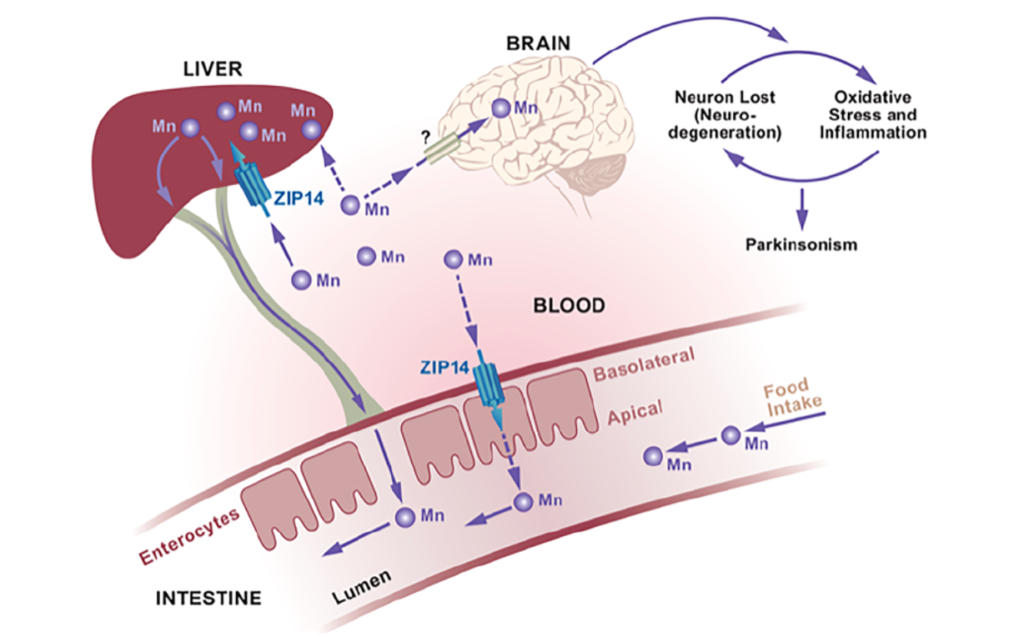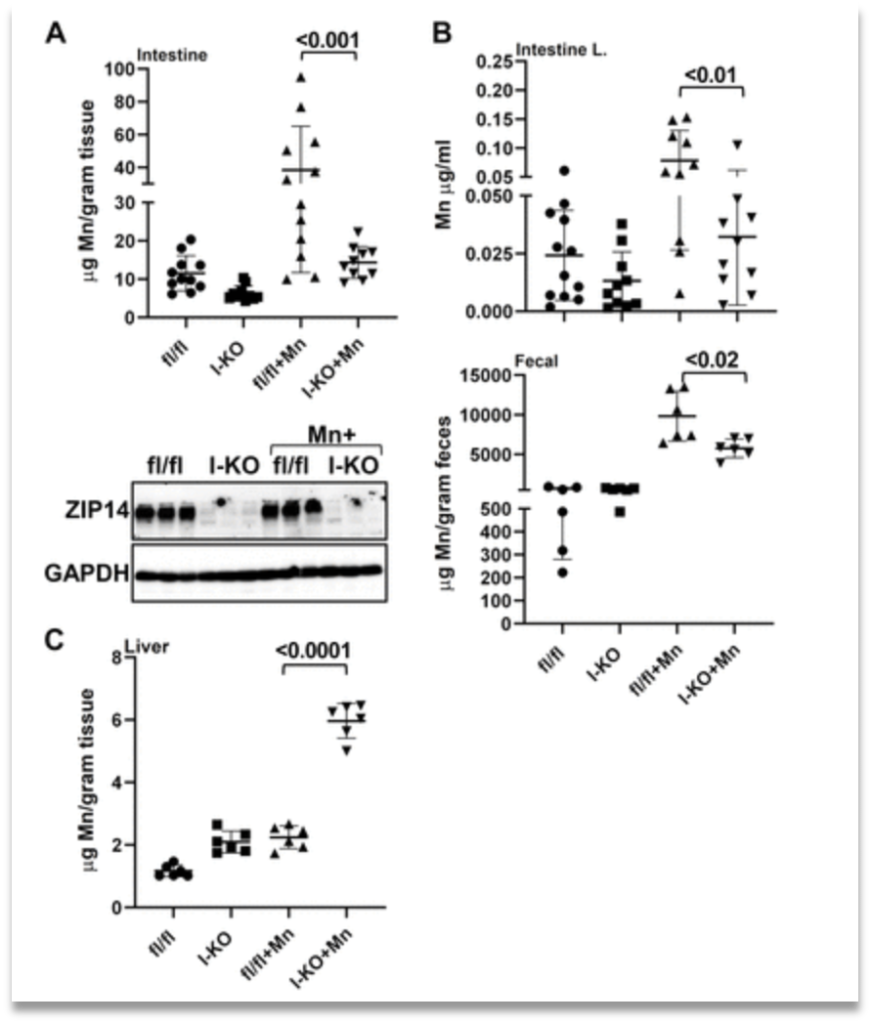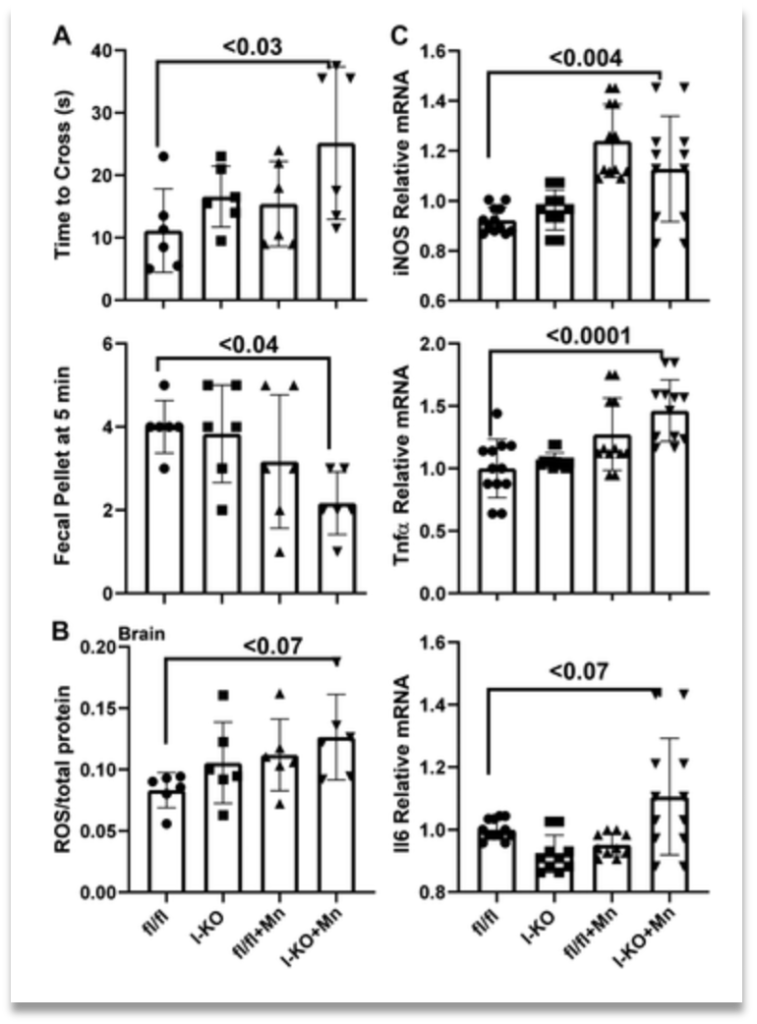This research article studies the effects of deletion of Slc39a14 (zip14), a known manganese importer into the enterocytes and hepatocytes(Fig. 1), has on manganese homeostasis in the body. This study researches whole body zip14 knockout and intestine localized knockout of zip14 in mice. They then tested how manganese levels in the mice were affected and if these levels capitulated with that seen in manganism cases. The motor skills of the mice were also tested due to manganism being a neurodegenerative disease.

They first tested whole body knockout of zip14 in the mice. The results were high manganese excess throughout the entire body, including the brain. Showing that entire body knockout of zip14 capitulates with the manganese excess levels seen in manganism (Fig. 2). A really intriguing find in this part of the studies is raised levels of manganese in the kidneys which may hint at the kidneys as an alternate route of manganese excretion.

The intestine localized zip14 showed no manganese excreted systemically, meaning that for manganese to be imported into the enterocytes zip14 must be active. They also found an uptake in manganese excretion through the liver and only slight levels of manganese excess throughout the rest of the body and no increase in brain levels (Fig. 3). This indicates that when one route of excretions is compromised, another can uptake more manganese to keep homeostasis.

The last part of the study was research into the motor function of intestine localized KO of zip14 and increased manganese uptake mice. They found that fecal pellet excretion rate in these mice was lower than the wild type and had much lower levels of manganese in the feces. They then tested time it took mice with I-KO (intestinal knockout) and the wild type to cross a beam. They found that mice with the I-KO and increased manganese uptake took a significantly longer time to cross the beam than the wild type. (fig. 4)

In conclusion, while whole body knockout of zip14 capitulates to the manganese excess seen in manganism, I-KO only slightly raises levels throughout the body and no excess is seen in the brain. However, when the I-KO is combined with increased manganese uptake, much higher levels of manganese excess are seen and there a slight alteration in the mice’s motor skills. There is also evidence that when there is no route for zip14 to excrete manganese the kidney’s may have an alternative route of excretion for manganese. This may be an interesting topic to research in the future.
Citation: Aydemir, Tolunay B., et al. “Intestine-Specific Deletion of Metal Transporter ZIP14 (SLC39A14) Causes Brain Manganese Overload and Locomotor Defects of Manganism.” American Journal of Physiology-Gastrointestinal and Liver Physiology, 20 Mar. 2020, https://journals.physiology.org/doi/full/10.1152/ajpgi.00301.2019?utm_campaign=American_Journal_of_Physiology_-_Gastrointestinal_and_Liver_Physiology_TrendMD_1&utm_medium=cpc&utm_source=TrendMD.


